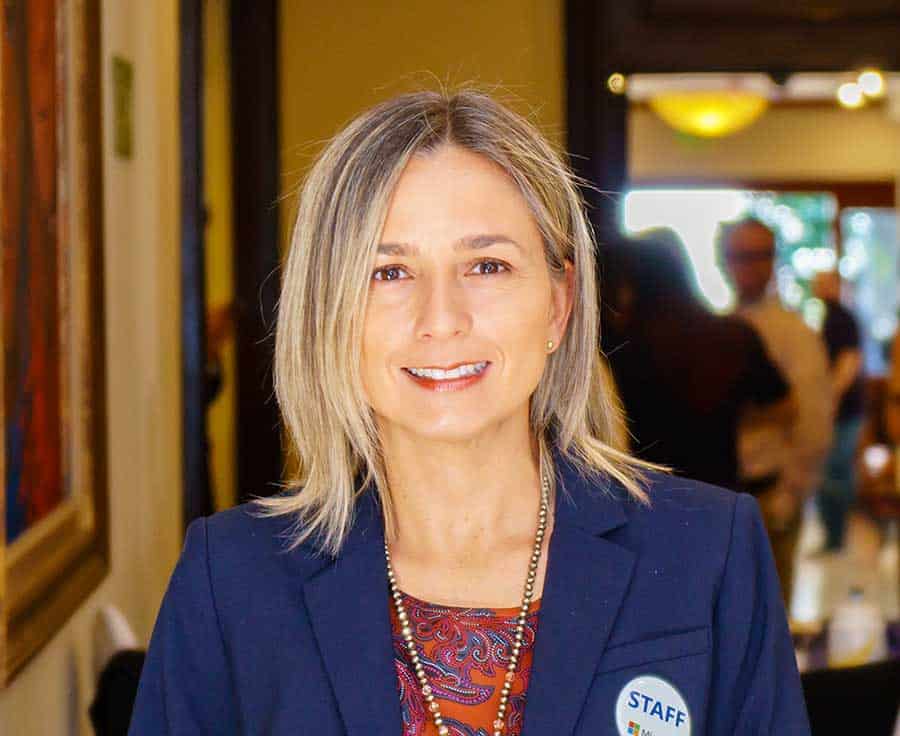
Above: Microsoft’s Ineke Geesink. Photo by Jose ISA Barahona, courtesy Microsoft.
BitDepth#1093 for May 16, 2017
The two-year history of Windows 10 has been a surprisingly low-keyed one. The software was introduced without the usual bombast and courted online relationships with its users and customers rather than trying to build interest through mainstream media attention.
Microsoft has issued multiple updates quietly since the product’s introduction, the most recent major update being the Windows 10 Creators Update, announced first on the Windows Insider blog, home of early Windows releases and a beta tester’s paradise.
On its surface, the newest major update brings little that’s apparently new to the table beyond a revamped Microsoft Paint capable of basic 3D modeling (find community created models here), but there’s a tremendous amount of work going on in the background of the operating system’s development in the deeply relevant areas of compatibility, stability and security.
Windows 10 was well received on its introduction for visibly resolving the biggest problem with its predecessor, Windows 8, the tiled interface that overtook the screen on startup.
An early effort by Microsoft to embrace the raging interest in tablet computing as an alternative to desktop and traditional portable computing, it flew in the face of both the entrenched user experience history and muscle memory of millions of Microsoft desktop users who were accustomed to using their PCs in a very different way.
It was a bold experiment from a company better known for incremental measures, and the company did itself no favours when took away the Start button in Windows 8, effectively removing the core navigation hub in their long standing interface design.
Microsoft first tried to ride out the storm that ensued, then they skipped a major update version number to announce Windows 10 as a symbol of the massive rethinking that was put into the redesign of the OS.
The company came up with a more muscular and capable start button that included a scaled down version of the tiled interface in a more welcome and useful form.
The adaptation was widely accepted as a good idea and that freed the company to get on with the more crucial business of developing a solid, modern operating system for the vast numbers of desktop and portable computer users running Windows.
Windows users will find almost excellent backward compatibility in the newest version of Windows 10, which cheerfully runs my old copy of Photoshop CS2 and a truly ancient version of Lightroom on the tablet I use.
Beyond Paint, users will find a significantly improved web browser in Edge, the browser that’s replaced Explorer since the introduction of Windows 10, with new tab management features and a greater commitment to the flat, minimalist user interface style that was first, rather hesitantly, introduced in Windows 8.
Ineke Geesink, Business Group Product Marketing at Microsoft, explained in an exclusive Skype interview that the company has placed an emphasis on security in the new update.
“IT administrators can review attacks more easily,” Geesink said, “and can access more administrative tools via the cloud.”
Administrators considering a Windows 10 deployment can find an abundance of resources here.
Individual users considering the upgrade or using the system and experiencing hiccups can turn to an extensive collection of how-to videos on Microsoft’s YouTube channel. In my impatience to get on with the update, I probably skipped the built in video introducing the new features of the OS.
While Geesink declined to offer specific numbers for adoption of Windows 10 in T&T, she did note that, “T&T has an average for adoption that’s in line with Latin America, though Costa Rica leads in adoption in the Latin American region.”
There are very few gotchas in Windows 10 and a lot of promise on the horizon.
On the watch-out-for-this front, consider deleting the Windows.old folder that holds your previous installation of Windows after a successful upgrade.
And by successful, I mean that you’ve been using it for a month, you’ve launched all the apps you regularly use, connected to all the services and devices that are critical to you and are happy with how things are going.
The Windows.old folder is used for a rollback of the system to your previous OS and if you’re running a modern laptop with a solid state drive, it’s probably consuming several gigabytes of data you probably would like to have back.
There’s another Creator’s update coming soon, though this one places an aggressive emphasis on compatibility.
Microsoft has already announced that is simplifying the installation of Ubuntu Linux by bringing it to the Windows Store. The OS will run as a Windows Subsystem, and the company is discussing bringing SUSE Linux and Fedora to the store as well.


